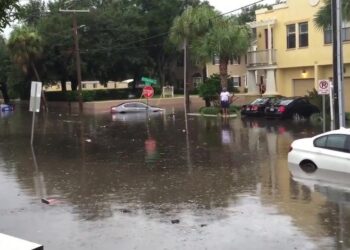Sweeping changes to home insurance regulations are fundamentally altering coverage landscapes nationwide. Understanding these “New Law Changes Home Coverage” is no longer optional—it’s critical for protecting your most valuable asset. This comprehensive guide dissects the major updates, their implications for your policy and premiums, and actionable strategies to ensure you remain adequately protected without overpaying.
A. Understanding the Catalyst: Why Major Changes Are Happening Now
Several converging forces are driving this legislative overhaul:
-
Escalating Climate-Related Losses: Record-breaking wildfires, hurricanes, floods, and severe storms have caused unprecedented payouts, straining insurer reserves and highlighting coverage gaps in traditional policies.
-
Skyrocketing Reconstruction Costs: Post-pandemic material inflation, labor shortages, and supply chain disruptions have dramatically increased the cost to rebuild homes, often exceeding older policy limits.
-
Evolving Risk Assessment: Insurers and regulators now utilize more sophisticated models incorporating real-time climate data, recognizing risks (like wildfire zones or flood plains) are expanding and intensifying faster than previously modeled.
-
Consumer Protection Concerns: Lawmakers responded to widespread issues where homeowners faced massive underinsurance after disasters, discovering their coverage fell far short of actual rebuilding costs.
-
Market Volatility: Insurer insolvencies in high-risk states and widespread non-renewals prompted regulatory intervention to stabilize markets and ensure availability of coverage.
B. Key Home Insurance Law Changes Impacting Your Coverage
The legislative updates focus on several core areas, significantly impacting standard policies:
-
Mandatory Extended Replacement Cost (ERC) or Guaranteed Replacement Cost (GRC):
-
A. The Change: Many states now mandate insurers offer (and sometimes automatically include or require a specific rejection waiver for) ERC or GRC coverage. ERC typically provides 25-50% above your dwelling limit; GRC covers the full cost to rebuild, regardless of the policy limit.
-
B. Why It Matters: This directly addresses underinsurance caused by soaring construction costs. Previously standard “Replacement Cost” only covered up to the policy limit, which could easily be insufficient after a major disaster.
-
C. Impact on Premiums: This enhanced coverage comes at a higher premium cost but is crucial financial protection.
-
-
Revised Minimum Coverage Requirements:
-
A. The Change: State insurance departments are increasing the minimum recommended (and sometimes mandated) dwelling coverage limits insurers must use when writing policies. This is based on updated, localized construction cost data.
-
B. Why It Matters: Prevents systematic underinsurance by ensuring policy limits start closer to realistic rebuilding estimates.
-
C. Impact on Premiums: Higher minimum limits directly translate to higher base premiums for most homeowners.
-
-
Stricter Rules on Non-Renewal & Cancellation:
-
A. The Change: New laws impose stricter notice periods (e.g., 75-120 days instead of 30-45) for non-renewal due to wildfire risk or other factors. Some states limit cancellations mid-term except for specific reasons (non-payment, fraud, material misrepresentation).
-
B. Why It Matters: Gives homeowners significantly more time to find alternative coverage in a challenging market, reducing the risk of being left uninsured.
-
C. Impact on Premiums: While not directly affecting your premium, it provides crucial stability and time for shopping around if faced with non-renewal.
-
-
Mandatory Offer (or Inclusion) of Water Backup Coverage:
-
A. The Change: Several states now require insurers to offer water backup coverage (for sewers or drains backing up), and a few mandate it be automatically included unless the homeowner specifically opts out in writing.
-
B. Why It Matters: Standard policies often exclude this common and expensive damage. Mandating the offer/inclusion closes a significant coverage gap many homeowners weren’t aware of.
-
C. Impact on Premiums: Adding this endorsement increases your premium, but the cost is generally modest compared to the potential repair bills.
-
-
New Deductible Structures for Specific Perils:
-
A. The Change: To manage soaring losses, new laws allow or mandate percentage-based deductibles for wind/hail (especially in coastal or plains states) and wildfire (in high-risk zones). Instead of a flat $1,000 deductible, you might pay 2-5% of your dwelling coverage limit.
-
B. Why It Matters: Shifts more of the initial loss cost onto the homeowner for these high-frequency/high-severity perils. A 5% deductible on a $400,000 home means $20,000 out-of-pocket before coverage kicks in for a covered wind/hail claim.
-
C. Impact on Premiums: Policies with percentage deductibles often have a lower base premium than those offering a choice of low flat deductibles, but your potential out-of-pocket cost per claim is much higher. This is a major trade-off.
-
-
Enhanced Wildfire Mitigation Discounts & Requirements:
-
A. The Change: States in wildfire-prone areas are mandating larger premium discounts for homeowners who implement specific, verifiable mitigation measures (e.g., creating defensible space, installing ember-resistant vents, using fire-resistant roofing). Some laws link eligibility for certain policies to completing these mitigations.
-
B. Why It Matters: Incentivizes proactive risk reduction, potentially making insurance more affordable and available while hardening communities against fire.
-
C. Impact on Premiums: Significant discounts are available, potentially offsetting other premium increases, but require upfront investment in home hardening.
-
-
Increased Scrutiny on Roof Age & Condition:
-
A. The Change: Insurers are now often mandated to clearly disclose how roof age and condition impact premiums and eligibility. Some states restrict non-renewal solely based on roof age if the roof is in good condition.
-
B. Why It Matters: Provides transparency and protects homeowners with older but well-maintained roofs from arbitrary non-renewal. However, older roofs still typically result in higher premiums.
-
C. Impact on Premiums: Expect higher premiums or difficulty finding coverage if your roof is near or past its typical lifespan. Proactive replacement can lead to significant savings.
-

C. State-by-State Variations: Where Changes Are Most Pronounced
While trends are national, specific implementations vary significantly:
-
California: Ground zero for changes due to wildfires and market retreat. Major focus on non-renewal restrictions (e.g., AB 2756 requiring 75-day notice), mandated wildfire mitigation discounts (SB 872, AB 2167), and efforts to stabilize the FAIR Plan (insurer of last resort). Stricter rules on roof age non-renewals.
-
Florida: Focuses on curbing litigation abuse (SB 2A, SB 7052) that contributed to market instability, roof replacement rules (allowing ACV for roofs over 10 years old unless replaced), and strengthening Citizens Property Insurance (state-run insurer) eligibility requirements.
-
Louisiana & Texas: Emphasis on wind/hail deductibles, water damage coverage clarifications (especially after hurricanes), and managing insurer solvency following major storms. Texas HB 1900 addressed roof solicitation abuse.
-
Colorado & Oregon: Implementing significant wildfire mitigation credit programs and stricter rules on non-renewal in high-risk zones. Colorado also passed laws increasing transparency in claim denials related to wildfires.
-
Northeastern States (NY, NJ, CT): Increasing focus on mandatory flood insurance disclosures, water backup coverage offers, and addressing increasing severe storm (wind, hail, rain) losses. Updates to minimum coverage requirements based on inflation.
D. How These Changes Directly Impact Homeowners
The practical consequences of these new laws are far-reaching:
-
Higher Premiums: Mandatory ERC/GRC, increased minimum coverage limits, and added endorsements (like water backup) directly increase your premium cost. Percentage deductibles offer lower premiums but higher potential out-of-pocket costs.
-
Reduced Risk of Underinsurance: Mandatory ERC/GRC offers and revised minimum limits are designed to ensure your coverage actually matches the cost to rebuild your home.
-
Increased Transparency & Stability: Stricter non-renewal rules and clearer disclosures about roof impact and mitigation credits provide more certainty and time to react.
-
New Coverage Gaps to Understand: Percentage deductibles create a significant potential financial exposure. Homeowners must understand exactly what their deductible is for wind/hail/wildfire.
-
Proactive Mitigation Pays Off: Wildfire hardening discounts are now more substantial and sometimes essential for obtaining or keeping coverage. Investing in mitigation is increasingly financially prudent.
-
Importance of Policy Reviews: Simply renewing your policy without a thorough review is riskier than ever. Coverage that was adequate last year may now fall short due to new minimums or construction inflation.

E. Essential Action Steps for Homeowners in 2024/2025
Protect yourself in this new regulatory environment:
-
Demand a Comprehensive Coverage Review:
-
A. Contact Your Agent/Insurer: Schedule a review specifically focused on the new laws. Don’t wait for renewal.
-
B. Verify Dwelling Coverage Limit: Ensure it reflects current local rebuilding costs per square foot, including debris removal and code upgrade coverage. Ask how they calculated it.
-
C. Understand Your Replacement Cost Type: Do you have standard Replacement Cost (RC), Extended Replacement Cost (ERC), or Guaranteed Replacement Cost (GRC)? Know the percentage or terms. Opt for ERC/GRC if available and feasible.
-
D. Scrutinize All Deductibles: Know the exact dollar amount or percentage for each peril (especially wind/hail, wildfire, hurricane). Calculate what you’d pay out-of-pocket for a total loss.
-
-
Evaluate and Secure Critical Endorsements:
-
A. Water Backup Coverage: Confirm if you have it. If not, add it immediately – it’s often inexpensive relative to the risk.
-
B. Building Code/Ordinance Coverage: Ensures you can rebuild to current codes after a loss, which can be significantly more expensive. Essential.
-
C. Service Line Coverage: Protects underground utility lines you own (water, sewer, electrical) from breaks. Often overlooked but valuable.
-
D. Increased Special Limits: Review sub-limits for valuables like jewelry, art, electronics. Increase them with scheduled personal property endorsements if necessary.
-
-
Optimize Costs Through Mitigation & Discounts:
-
A. Implement Wildfire Hardening: Contact your insurer or state forestry department for a defensible space assessment and list of approved mitigation actions for discounts (e.g., clearing brush, upgrading vents, roof materials).
-
B. Explore All Discounts: Ask about bundling (auto/home), claims-free, security systems, new home, renovation (roof, electrical, plumbing), paperless billing, autopay, and loyalty discounts.
-
C. Consider a Higher (Flat) Deductible: If you can afford a higher out-of-pocket cost for common claims, raising your all-peril deductible (e.g., from $1,000 to $2,500) can lower your premium. Weigh this carefully against percentage deductibles.
-
-
Shop Around Strategically:
-
A. Compare Quotes Annually: Loyalty rarely pays. Get quotes from at least 3-5 insurers, including regional carriers and independents who access multiple markets. Use an independent agent.
-
B. Compare Apples-to-Apples: Ensure quotes include identical coverage types (ERC/GRC), limits, deductibles (flat and percentage), and endorsements.
-
C. Check Insurer Financial Strength: Use ratings from AM Best, S&P, or Moody’s to ensure the company is stable.
-
D. Understand Non-Admitted Carriers: In high-risk areas, you might be offered coverage from non-admitted (surplus lines) carriers. They aren’t backed by state guaranty funds but may be your only option. Understand the risks.
-
-
Plan for High Deductible Scenarios:
-
A. Emergency Fund: Ensure you have sufficient liquid savings to cover your highest potential deductible (especially percentage-based ones).
-
B. Understand Cash Value vs. Replacement Cost: For personal property, ACV (Actual Cash Value) pays depreciated value; RCV pays the cost to replace new. RCV costs more but provides far better protection.
-
F. The Future of Home Insurance: Trends to Watch
The regulatory landscape will continue evolving:
-
Increased Parametric Insurance Options: Policies paying out based on measurable triggers (e.g., hurricane wind speed at a location, earthquake magnitude) rather than traditional loss adjustment, potentially speeding up payouts for widespread events.
-
Broader Adoption of Percentage Deductibles: Likely to expand beyond wind/hail/wildfire as insurers manage catastrophe risks.
-
Tighter Link Between Mitigation and Affordability/Availability: Expect more states to tie eligibility and pricing directly to verified home hardening efforts.
-
Greater Focus on Flood Risk: As FEMA updates flood maps, more homeowners may be required or strongly encouraged to purchase flood insurance, separate from homeowners policies.
-
Usage of AI in Risk Assessment & Pricing: Insurers will increasingly leverage AI for hyper-localized risk modeling, potentially leading to more personalized (and volatile) premiums.
Conclusion: Navigating the New Normal in Home Protection
The “New Law Changes Home Coverage” represent a fundamental shift driven by escalating climate risks and economic realities. While often resulting in higher premiums, these changes aim to address critical vulnerabilities like underinsurance and provide more stability in volatile markets. Homeowners must move from passive policyholders to proactive risk managers. Thoroughly understanding your coverage details – especially dwelling limits, replacement cost type, peril-specific deductibles, and essential endorsements – is paramount. Leveraging mitigation for discounts, shopping around diligently, and planning for potential high out-of-pocket costs are no longer optional strategies but essential components of responsible homeownership in 2024 and beyond. Staying informed and engaged with your insurance coverage is the most effective way to ensure your home remains a secure sanctuary, not a financial liability, in the face of these sweeping changes.
Tags: home insurance law changes 2024, dwelling coverage updates, extended replacement cost, guaranteed replacement cost, water backup coverage, insurance non-renewal rules, wildfire mitigation discounts, wind hail deductible, home insurance premium increase, homeowners policy review, mandatory insurance coverage, state insurance regulations, property insurance updates, flood insurance requirements, rebuilding cost calculator
















